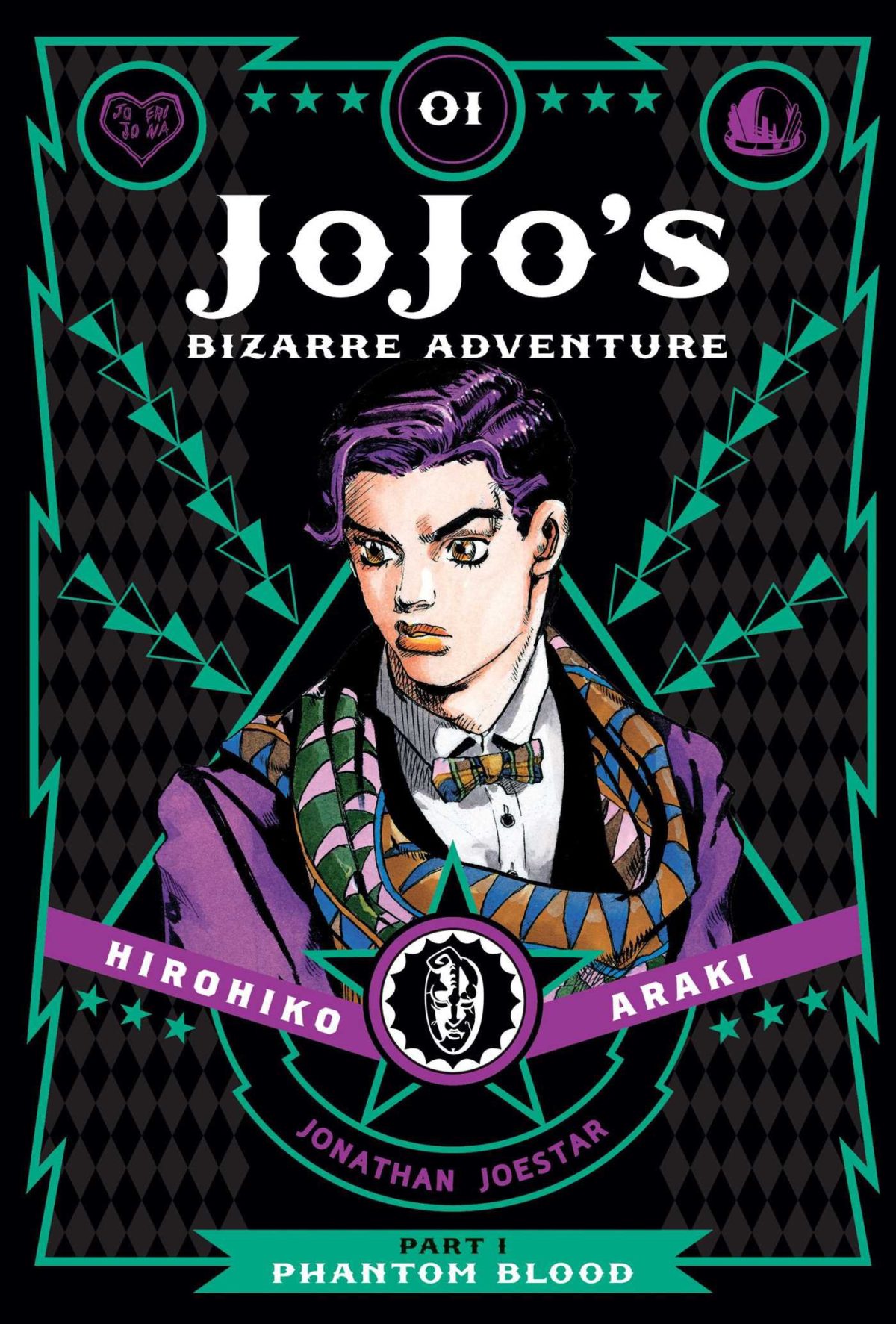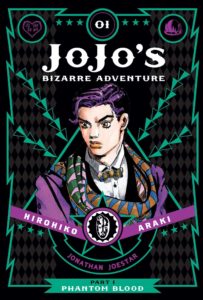Manga Review: Jojo’s Bizarre Adventure Part 1 Phantom Blood 01 by Hirohiko Araki
Centuries ago in Mexico, an offshoot of the Aztecs discovered a method of attaining eternal life through the consumption of human blood. They ruled supreme for a while, then abruptly vanished from the pages of history. One of their mysterious stone masks was excavated in the latter half of the Nineteenth Century, and made its way to Britain. There, it became the catalyst that altered the fate of two young men and their descendants.
In 1868, lower-class ne’er-do-well Dario Brando was returning home from the pub in a storm when he came across a carriage accident. The driver and the female passenger were dead, and the male passenger looked dead, but an infant was alive. Dario was going to loot the bodies, but the man woke up and mistakenly believed that Dario had saved his life. He rewarded the rascal handsomely.
Dario used the reward money to open his own pub, but his alcoholism and general mismanagement drove it into the ground. He also abused his wife and child, sending the former to an early grave. By 1880, his health was completely failing and Dario realized he was about to die. Despite his behavior, Dario did love his son Dio, and decided to prevail upon the rich man in a letter to take care of the boy.
And so it was that Dio Brando came to live with the Joestar family. A cunning lad, and already a skilled manipulator at age twelve, he swiftly ingratiated himself to everyone but the Joestar heir, Jonathan Joestar, who was nicknamed “Jojo.” Dio’s plan was to estrange Jojo from his family and friends, cutting him off from all positive human contact. He meant to drive Jojo to suicide, allowing Dio to become the new heir to the Joestar fortune.
This plan doesn’t quite work, and Dio switches to biding his time, but not before committing a horrific act of animal abuse.
In 1888, with the boys graduating school (Jojo taking a degree in archaeology, and Dio in law), Mr. George Joestar is ill and sinking fast. Jojo finds the letter Diego Brando sent introducing Dio, and discovers that Diego’s symptoms exactly match those of George. He swiftly realizes that Dio is somehow responsible.
Jojo heads to the slums of London to get the evidence he needs, and the antidote for his father. Meanwhile, Dio has filched the stone mask from George’s collection, and is about to find out what it really does. When these two meet again, the true nature of their fate will be revealed!
This was the first installment of Araki’s series of series about the adventures of the Joestar family and those connected to them. After the initial color pages, which assure the audience that weirdness is coming, the story switches to a somewhat more realistic tale of a charismatic social climber using any method at his disposal of getting wealthy without getting caught.
Until Dio’s cornered and decides to find out what the stone mask actually does, of course. The volume ends as he uses the mask himself–the amazing battles that this manga is known for begin with the next volume.
Araki’s character designs are bulkier here than in later installments. As he mentions in the author’s notes, this was created in the age when Stallone and Schwarzenegger were the big movie stars, and overgrown musculature was all the rage. Jojo and Dio can barely fit into their somewhat fanciful Victorian suits.
This volume also has the one combat scene where Speedwagon, a former slum dweller who becomes Jojo’s sidekick and a good ally to the Joestar family, does anything of importance.
This is a violent series, and there are often grotesque results fully shown on-panel. Especially disturbing is what happens to the dog Danny.
As was the custom with shounen (boys’) manga of the time, female roles are at a minimum. Erina is there to be a romantic interest for Jojo, and to be forcibly kissed by Dio as a way of hurting his rival. (This scene also shows how abusers can be enabled by their friends; Dio’s hanger-ons admire him for doing things they’re too chicken to actually try.)
This is also very much penny dreadful England, not a meticulously researched historical fiction. The Chinese character is particularly stereotyped.
The characterization is very shallow, with most of the good bits going to Dio, who would become one of manga’s and anime’s defining villains. Araki has since gotten much better at writing.
Recommended to anyone who’s enjoyed the Jojo anime series.



1 comment
Comments are closed.